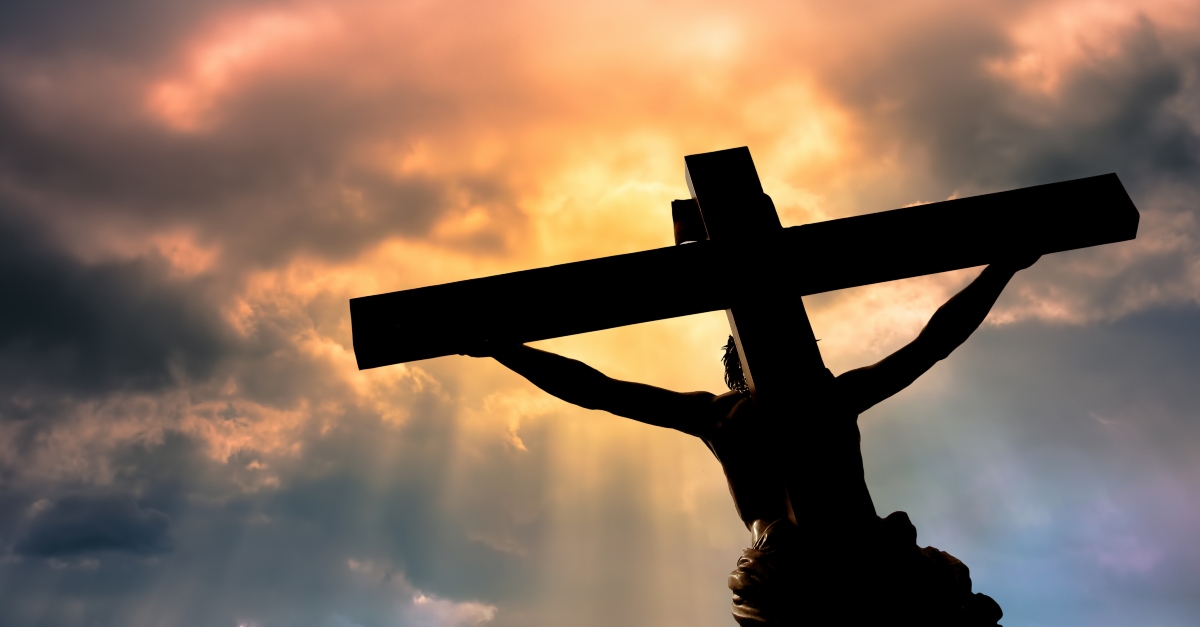Why Was Jesus Given a Crown of Thorns?
Share

Tucked away in the story of Jesus’ bloody trail to the cross is that the soldiers who beat him wrapped him in a purple robe and placed a crown of thorns upon his head. They gave Jesus a crown of thorns to mock him because Jesus spoke openly to Pilate that he was a king, but his kingdom was not of this world (see John 18:36). The soldiers meant to mock Jesus by placing a crown of thorns on his head, but perhaps there is more to the significance of the crown of thorns.
There was nothing standard or routine about Jesus’ arrest and being sentenced to die by crucifixion. He was an innocent man whom Pilate found no charge against (see John 19:6). But Jesus was sentenced to death because that was the reason he came to earth; so that he could save the world and make salvation possible for all peoples and nations.
Symbolism and Meaning of Jesus' Crown of Thorns
Placing the crown of thorns on Jesus’ head would not have been a normal part of crucifixion during this time. Crucifixion was used by the Romans as a punishment. In the documentation of Jesus’ crucifixion, found within the Gospels, a crown of thorns was placed on his head by the soldiers.
Jesus had told Pilate that his kingdom was not of this world. The soldiers draped a purple robe around Jesus, put a crown of thorns on his head and shouted, “Hail, King of the Jews” (see John 19:2-3). They did this to make a mockery of Jesus and belittle him. The crown of thorns symbolized the royalty and majesty of a king and was used as part of their futile attempts to humiliate him. They did not realize that Jesus was offering up his own life in accordance with the will of his Father to save the world.
Scriptures Mentioning the Crown of Thorns
Before Jesus was sentenced to be crucified, Pilate had him beaten and whipped. Three of the four Gospels mention specifically that Jesus had a crown of thorns put on his head by the Roman soldiers after they beat him. It is common for details to vary across the four Gospels. Together, the four Gospels give a detailed presentation of Jesus’ ministry and life.
Matthew 27:29 - “And after twisting together a crown of thorns, they put it on His head, and a reed in His right hand; and they knelt down before Him and mocked Him, saying, ‘Hail, King of the Jews!’”
Mark 15:17 - “They dressed Him up in purple, and after twisting a crown of thorns, they put it on Him.”
John 19:2 - “And the soldiers twisted together a crown of thorns and put it on His head and put a purple robe on Him.”
The accounts of this happening in the Gospels of Matthew, Mark, and John are intense. One can only imagine the pain and suffering Jesus endured. The crown of thorns that was being used as a way to hurt and mock Jesus and his claims of being a king has instead become a powerful reminder of exactly who Jesus is and what he went through to save the world.

Photo credit: ©Getty Images/mbolina
Why Was Jesus Humiliated before His Death?
The soldiers mocked Jesus and attempted to humiliate him as part of the crucifixion process. Jesus had stated he was a king, and they used that statement against him to ridicule and shame him. The soldiers slapped him and made jokes of his claims of kingship.
Their pride, their hatred, or whatever it may have been, kept the soldiers from recognizing who Jesus really was. For Jesus died even to cover the soldiers’ sins. This is the great love that Jesus has shown for the entire world.
Where Else Do We See Thorns in the Bible?
References to thorns are throughout the Bible, found in the Old and New Testaments. These references affirm the negative connotation of the word and the desolation associated with thorns.
Numbers 33:55 - “But if you do not drive out the inhabitants of the land from before you, then it shall come about that those whom you let remain of them will become as pricks in your eyes and as thorns in your sides, and they will trouble you in the land in which you live.”
Hosea 9:6 - “For behold, they will go because of destruction; Egypt will gather them up, Memphis will bury them. Weeds will take over their treasures of silver; thorns will be in their tents.”
Matthew 7:16 - “You will know them by their fruits. Grapes are not gathered from thorn bushes nor figs from thistles, are they?”
Hebrews 6:7-8 - “For ground that drinks the rain which often falls on it and brings forth vegetation useful to those for whose sake it is also tilled, receives a blessing from God; but if it yields thorns and thistles, it is worthless and close to being cursed, and it ends up being burned.”
These are just a sampling of verses that reference thorns throughout the Bible, but perhaps most noteworthy is the use of the word thorns in Genesis when God spoke of the curse following the sin of Adam and Eve.
Genesis 3:17-18 - “Cursed is the ground because of you; through painful toil you will eat food from it all the days of your life. It will produce thorns and thistles for you.”
The consequences Adam and Eve suffered because of their sinful choice included the ground yielding thorns and thistles. The Romans soldiers used a crown of thorns, part of the original curse, and placed it on the head of Jesus who would offer atonement, salvation, and hope for the entire world. Truly, this was a powerful symbol of the sin and death that Jesus was about to deliver the world from through his death and resurrection.
What Does the Crown of Thorns Teach Us about Who Jesus Is?
Thorns are associated with curses, death and dying, pain and sorrow, and sin. The Roman soldiers placed a crown of thorns on the head of the one who would take on all sin, and pain, and deliver the world from death. What the soldiers meant as a mockery of Jesus’ claims to being a king, instead demonstrated exactly who Jesus is.
Jesus is the King of kings. He alone is the Savior of the world. He took on the shame, sorrows, and sins of the world to save us and redeem us. Jesus willingly stood in our place, was nailed to the cross in our place, and paid our debt by offering up his life according to the will of the Father. What we learn from the crown of thorns is that Jesus’ love for humanity has no bounds, even willing to take on desolation because he loves us and made a way for our redemption.
A Love Unlike Any Other
Jesus’ crucifixion was horrific. He endured unthinkable pain, was beaten brutally, and died on our behalf. When we consider all that Jesus went through, it becomes clear that the depth and breadth of his love is staggering. Truly, Jesus’ love is unlike any other love we will experience.
The crown of thorns placed on Jesus’ head should have been what we suffered, but Jesus took our place. Only he was worthy, and only he could serve as the unblemished lamb sent to die a death that would redeem the world. Though meant to taunt and embarrass Jesus, the crown of thorns was actually a radical symbol of who Jesus is, both Savior and King.
Related articles
Did Jesus Actually Descend into Hell?
Why Does Jesus Say "It Is Finished"?
Why Is Joseph of Arimathea included in the Easter Story?
Photo credit: Unsplash/Mads Schmidt Rasmussen
